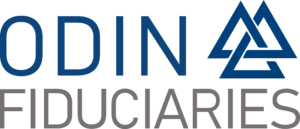Types of trusts and who’s involved
By Bryony Jennings
A trust is not a legal entity, but rather a private legal arrangement where the ownership of someone’s assets (which might include property, shares or cash) is transferred to someone else (usually, in practice, not just one person, but a small group of people or a trust company) to look after and use to benefit one or more others.
The person giving the assets to a trust is usually known as the “settlor” (Isle of Man and the UK) or a “grantor” in the US (but can also sometimes be called the “trustor” or the “creator”).
The people asked to look after the assets of a trust are called the “trustees” and the person(s) who benefit from the trust is called a “beneficiary”.
The details of the arrangement between the trustees and the beneficiaries of the trust are usually laid out in a “trust deed”.
Sometimes a trust deed will provide for the appointment of someone called a protector. A protector may be an individual or a company and is a person who has some control or influence over the trustee(s) and/or the trust. The powers and responsibilities of a protector are set out in the trust deed of a trust and it is usual, if the protector has no other power, for a protector to be able to remove a trustee as well as to appoint additional or replacement trustees.
Whilst a trust is administered in accordance with the trust deed and statutory law the trustee(s) of a trust are usually guided by what is called a letter or memorandum of wishes which is something that a settlor or principal beneficiary of a trust may give to the trustees and is more commonly associated with discretionary trusts. The letter or memorandum, which is not contractually binding on the trustees, sets out the rationale for the creation of the trust and without wishing to interfere or control the discretion of the trustee seeks to provide guidance as to what the settlor or principal beneficiary would like the trustee to consider when and if their discretion is exercised.
One common misconception is that the assets in the trust are legally owned by the trust. In fact, a trust, unlike a company, cannot own assets and instead the trustees are the legal owners of the assets.
The distinctive feature of a trust is therefore the separation of legal ownership to beneficial ownership of the assets in the trust, known as the trust fund. The trustees are the legal owners of the assets, but the trustees must at all times put the interest of the beneficiaries above their own. Whilst a settlor of a trust can be a trustee, he/she must still act in the interests of the beneficiary(s), not themselves.
Trusts can take effect during the lifetime of the settlor (in which case in the UK they are called a “lifetime settlement”) or shortly after the death of the settlor (in which case they are called a “Will trust”).
The more common types of family trust are:
- Accumulation and Maintenance;
- Interest in Possession; and
An accumulation and maintenance trust (an “A&M”) is one where the property in the trust is held for the maintenance, education or benefit of the beneficiaries or accumulated, i.e. saved and added to the trust fund, until the beneficiaries reach a specific age, e.g. 18, whereupon the beneficiary becomes absolutely entitled to the property in the trust.
An interest in possession trust (“an “IIP”) is one where the beneficiary has an immediate and automatic right to the income from the trust after expenses.
The beneficiary of an IIP who receives income (the “income beneficiary”) often doesn’t have any rights over the capital held in a trust. The capital will normally pass to a different beneficiary or beneficiaries in the future. The trustee(s) might have the power to pay capital to a beneficiary even though that beneficiary only has a right to receive income. However, this will depend on the terms of the trust.
A discretionary trust is one where the trustees are responsible for the administration of a trust and its assets (the “trust fund”) for the benefit of the beneficiaries. Unlike an A&M or IIP trust, the trustee(s) have “discretion” as to how to use the trust’s income and to utilise or distribute (appoint) the trust’s capital or provide other benefits to beneficiaries and the conditions, if any, they may impose on the recipients.




